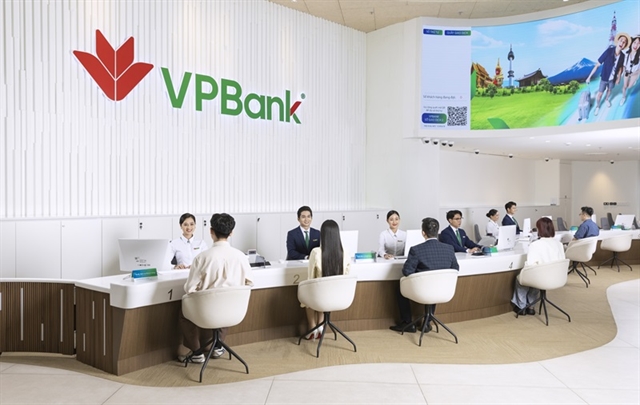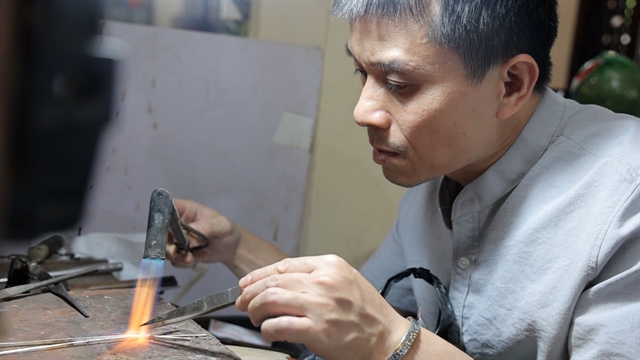 Economy
Economy

Việt Nam’s explosive economic growth is attracting attention the world over, and while much further work is required, optimism for the future is more than justified, explains Brian Spence, Co-Founder of S&P Investments.
32242031PM.JPG) |
| Brian Spence |
By Brian Spence
Việt Nam’s Gross Domestic Product (GDP) expanded by 6.81 per cent in 2017, marking its highest growth rate in a decade. The country continues to storm ahead this year, with the economy growing by 7.38 per cent in the first quarter – one of the fastest rates in Asia – and total growth is expected to be in the region of 6.7-6.8 per cent (the former as targeted by the National Assembly) for the year. It could even hit 7.1 per cent, according to the Asian Development Bank.
Looking ahead, the Vietnamese Government is seeking to maintain the country’s growth spurt until 2020, with Prime Minister Nguyễn Xuân Phúc having spoken of moves encouraging private companies – which currently account for 43 per cent of GDP – to grow and boosting investment into rural areas.
Industry and construction are the engine rooms of this growth. Việt Nam’s competitiveness on wages, high labour productivity and a young population noted for a “can-do” attitude means it has proven particularly attractive as an “offshored” manufacturing hub.
An electrified economy
Having started out in labour-orientated manufacturing, Việt Nam has made huge progress with technology-intensive work, most notably electronics. Those with an outmoded perception of the country may be surprised to learn that Việt Nam is ranked 18th among the world’s fastest-growing electronic exporters (mainly of finished goods, rather than just components like other countries) and that high-tech products have contributed around a quarter of GDP for several years now.
Smartphones are a huge part of this story, with Samsung’ factories being a case in point. Employing some 170,000 people, Samsung accounted for almost a quarter of Việt Nam’s total exports last year. But the boost the South Korean electronics giant has wrought for Việt Nam has been far reaching. As might be expected, its Thái Nguyên factory alongside its sister facility in Bắc Ninh Province have transformed the fortunes of the locations in which they are based. Whole service economies have sprung up to feed, entertain and accommodate their workers and executives, along with whole networks of suppliers to the factories themselves, making these provinces among Việt Nam’s richest. Thus, growth begets growth.
Outward-looking and open
Samsung is just one example of how Việt Nam is welcoming foreign industry since the country first opened up to it in 2015, most notably entering a trade pact with South Korea. Since then, the country has rapidly become remarkably outward-looking and open to free trade, with a deal soon to be inked with the European Union and Việt Nam being a founding member of the Trans-Pacific Partnership.
As savvy fund managers all over the world know, all this means that Việt Nam has a lot going for it as an investment prospect. Currently, investing in securities is looking very attractive indeed. Last year, the VN and HNX indexes soared by 48 per cent and 46 per cent respectively, with momentum still strong. Those picking real stock-market winners are said to have seen returns of up to 300 per cent - figures that have equity investment firms in the world over paying attention. Booming economic growth also naturally leads to big real estate opportunities, with investors both domestic and foreign piling in.
Proactive on problem areas
Of course, Việt Nam is not without its issues, but even here very positive moves are being made. Poverty levels have improved rapidly, but progress still needs to be made and youth unemployment can be high, particularly among graduates. Over-reliance on the caprices of foreign investment is not enough, while international funding is tapering off as the country’s economy grows. Dynamic, socially useful business, rather than charity, has to be prioritised alongside plugging the skills gap, and domestic entrepreneurship must be nurtured if growth is to be sustained. In response, the Vietnamese Government has set out ambitions of creating a vibrant “start-up nation”, with a million new enterprises being born by 2020.
With social enterprise a big focus and strong government support (such as creating a special kind of legal form), Việt Nam has created one of the most progressive ecosystems for these types of businesses in Southeast Asia. With this assistance, over 1,000 social enterprises have sprung up in Việt Nam and most are now thriving as registered companies. Many other countries, even in the West, must look on jealously at such progressiveness.
Vietnamese dynamism is evident in every aspect of the country’s economy and its merits extend far beyond merely having a young, cheap and plentiful supply of workers – although that is clearly playing a great part. Challenges remain, not least the rise of global trade protectionism sparked by China and the US. I am not alone in being hugely optimistic, however. Việt Nam has a rapidly-expanding middle class with aspirations to a Western lifestyle and all around I can see them getting there at ever greater speed.
There are a great many reasons why the smart money is staying on Việt Nam’s further growth. — VNS
* Brian Spence is Managing Partner of S&P Investments. He has over 35 years of experience in the UK financial services industry as an investment manager, financial planner, and M&A specialist. He is a regular contributor in the UK financial press and has a deep understanding of the financial services community. Brian’s column will reflect on all the challenges and opportunities within the Vietnamese market, bringing a fresh perspective to today’s hottest issues. The columnist’s email address is brian@sandpinvestments.com.




